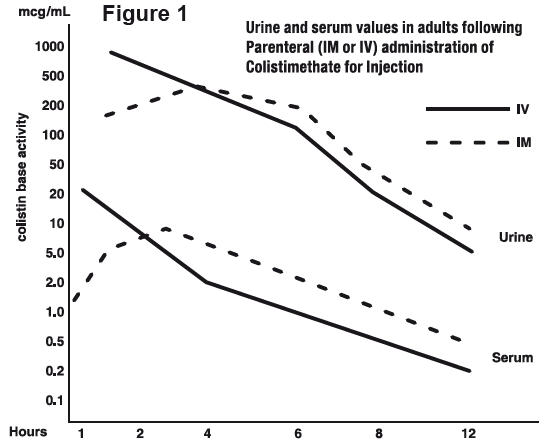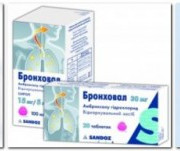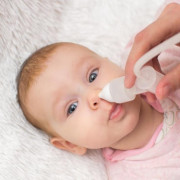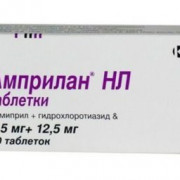Dapagliflozin (дапаглифлозин)
Содержание:
- Введение
- How should I take empagliflozin?
- History
- Empagliflozin side effects
- Dapagliflozin Dosage
- What do I need to tell my doctor BEFORE I take Empagliflozin?
- Empagliflozin dosing information
- Другая важная информация о Dapagliflozin
- What are some things I need to know or do while I take Empagliflozin?
- Usual Adult Dose for Diabetes Type 2
- Показания и противопоказания
- Особые случаи
- Mechanism of action
- What are some side effects that I need to call my doctor about right away?
- Consumer information use
- Medical uses
- Other Comments
- Противопоказания
- Usual Adult Dose for Cardiovascular Risk Reduction
- References
- Before taking this medicine
Введение
Сахарный диабет (СД) 2 типа является глобальной проблемой здравоохранения, которая достигла масштабов эпидемии как в развитых, так и развивающихся странах. Согласно данным за 2013 г., в мире зафиксировано 381 млн 800 тыс. пациентов с СД 2 типа . Рост популяции пациентов с СД 2 типа и частоты его хронических осложнений, особенно сердечно-сосудистых заболеваний и болезни почек, – одна из наиболее актуальных проблем, с которой сегодня сталкивается мировое сообщество.
Гипергликемия при СД 2 типа вызвана сочетанием прогрессирующей дисфункции бета-клеток и резистентности мышц, печени и адипоцитов к инсулину. Гипергликемия в свою очередь способствует дальнейшему снижению функции бета-клеток и увеличению инсулинорезистентности за счет так называемой глюкозотоксичности .
Лечение СД 2 типа направлено на минимизацию риска развития микро- и макрососудистых осложнений. Изменение образа жизни остается краеугольным камнем терапии больных СД 2 типа. Однако многие пациенты не достигают индивидуальной терапевтической цели, в связи с чем требуется фармакологическое вмешательство.
Существует целый арсенал противодиабетических препаратов, но их терапевтическая эффективность нередко сочетается с такими побочными эффектами, как увеличение массы тела или уровня гипогликемии . Более того, действие всех препаратов опосредовано через инсулин, и эффективность большинства из них зависит от функции бета-клеток. При прогрессировании заболевания и снижении функции бета-клеток эти методы лечения становятся менее эффективными . Таким образом, возникает потребность в новых препаратах с инсулиннезависимым механизмом действия и эффективностью, не зависящей от функции бета-клеток поджелудочной железы.
Ингибиторы натрий-глюкозного котранспортера 2-го типа (SGLT2) – это новый класс пероральных противодиабетических препаратов, позволяющих уменьшить уровень гликемии независимо от инсулина и функции бета-клеток.
How should I take empagliflozin?
Follow all directions on your prescription label and read all medication guides or instruction sheets. Your doctor may occasionally change your dose. Use the medicine exactly as directed.
You may take empagliflozin with or without food.
Call your doctor if you are sick with vomiting or diarrhea, if you consume less food or fluid than usual, or if you are sweating more than usual.
Your blood sugar will need to be checked often, and you may also need to test the level of ketones your urine. Empagliflozin can cause life-threatening ketoacidosis (too much acid in the blood). Even if your blood sugar is normal, contact your doctor if a urine test shows that you have ketones in the urine.
You may have low blood sugar (hypoglycemia) and feel very hungry, dizzy, irritable, confused, anxious, or shaky. To quickly treat hypoglycemia, eat or drink a fast-acting source of sugar (fruit juice, hard candy, crackers, raisins, or non-diet soda).
Your doctor may prescribe a glucagon injection kit in case you have severe hypoglycemia. Be sure your family or close friends know how to give you this injection in an emergency.
Also watch for signs of high blood sugar (hyperglycemia) such as increased thirst or urination.
Blood sugar levels can be affected by stress, illness, surgery, exercise, alcohol use, or skipping meals. Ask your doctor before changing your dose or medication schedule.
This medicine can affect the results of certain medical tests. Tell any doctor who treats you that you are using empagliflozin.
Empagliflozin is only part of a treatment program that may also include diet, exercise, weight control, blood sugar testing, and special medical care. Follow your doctor’s instructions very closely.
Store at room temperature away from moisture and heat.
History
It was developed by Boehringer Ingelheim and Eli Lilly and Company. It is also available as the combination empagliflozin/linagliptin, empagliflozin/metformin, or empagliflozin/linagliptin/metformin.
Regulatory status
As of May 2013, Boehringer and Lilly had submitted applications for marketing approval to the European Medicines Agency (EMA) and the U.S. Food and Drug Administration (FDA). The drug was approved in Europe in May 2014, and was approved by the FDA in August 2014. The FDA required four postmarketing studies: a cardiovascular outcomes trial, two studies in children, and a toxicity study in animals related to the pediatric trials.
Empagliflozin side effects
Get emergency medical help if you have signs of an allergic reaction: hives; difficult breathing; swelling of your face, lips, tongue, or throat.
Seek medical attention right away if you have signs of a genital infection (penis or vagina): burning, itching, odor, discharge, pain, tenderness, redness or swelling of the genital or rectal area, fever, not feeling well. These symptoms may get worse quickly.
Call your doctor at once if you have:
-
little or no urination;
-
dehydration symptoms—dizziness, weakness, feeling light-headed (like you might pass out);
-
ketoacidosis (too much acid in the blood)—nausea, vomiting, stomach pain, confusion, unusual drowsiness, or trouble breathing; or
-
signs of a bladder infection—pain or burning when you urinate, increased urination, blood in your urine, fever, pain in your pelvis or back.
Older adults may be more likely to have side effects from empagliflozin.
Common side effects may include:
-
bladder infection; or
This is not a complete list of side effects and others may occur. Call your doctor for medical advice about side effects. You may report side effects to FDA at 1-800-FDA-1088.
Dapagliflozin Dosage
Follow all directions on your prescription label and read all medication guides or instruction sheets. Your doctor may occasionally change your dose. Use the medicine exactly as directed.
You may take dapagliflozin with or without food.
Call your doctor if you are sick with vomiting or diarrhea, if you consume less food or fluid than usual, or if you are sweating more than usual.
Your blood sugar will need to be checked often, and you may also need to test the level of ketones your urine. Dapagliflozin can cause life-threatening ketoacidosis (too much acid in the blood). Even if your blood sugar is normal, contact your doctor if a urine test shows that you have ketones in the urine.
Low blood sugar (hypoglycemia) can happen to everyone who has diabetes. Symptoms include headache, hunger, sweating, irritability, dizziness, nausea, fast heart rate, and feeling anxious or shaky. To quickly treat low blood sugar, always keep a fast-acting source of sugar with you such as fruit juice, hard candy, crackers, raisins, or non-diet soda.
Your doctor can prescribe a glucagon emergency injection kit to use in case you have severe hypoglycemia and cannot eat or drink. Be sure your family and close friends know how to give you this injection in an emergency.
Also watch for signs of high blood sugar (hyperglycemia) such as increased thirst or urination, blurred vision, headache, and tiredness.
Blood sugar levels can be affected by stress, illness, surgery, exercise, alcohol use, or skipping meals. Ask your doctor before changing your dose or medication schedule.
This medicine can affect the results of certain medical tests. Tell any doctor who treats you that you are using dapagliflozin.
Dapagliflozin is only part of a complete treatment program that may also include diet, exercise, weight control, blood sugar testing, and special medical care. Follow your doctor’s instructions very closely.
Store at room temperature away from moisture and heat.
Seek emergency medical attention or call the Poison Help line at 1-800-222-1222.
Take the medicine as soon as you can, but skip the missed dose if it is almost time for your next dose. Do not take two doses at one time.
What do I need to tell my doctor BEFORE I take Empagliflozin?
- If you are allergic to empagliflozin; any part of empagliflozin; or any other drugs, foods, or substances. Tell your doctor about the allergy and
what signs you had. - If you have any of these health problems: Acidic blood problem or type 1 diabetes.
- If you have kidney disease.
- If you are dehydrated, talk with your doctor.
- If you are not able to eat or drink like normal, including before certain procedures or surgery.
- If you are pregnant or may be pregnant. Do not take empagliflozin if you are in the second or third trimester of pregnancy.
- If you are breast-feeding. Do not breast-feed while you take empagliflozin.
This is not a list of all drugs or health problems that interact with empagliflozin.
Tell your doctor and pharmacist about all of your drugs (prescription or OTC, natural products, vitamins) and health problems. You must check
to make sure that it is safe for you to take empagliflozin with all of your drugs and health problems. Do not start, stop, or change the dose of
any drug without checking with your doctor.
Empagliflozin dosing information
Usual Adult Dose for Diabetes Type 2:
Initial dose: 10 mg orally once a day in the morning -May increase to 25 mg orally once a day for patients tolerating therapy and requiring additional glycemic control Maximum dose: 25 mg per dayComments:-Limitation of use: Not recommended for patients with type 1 diabetes mellitus or for the treatment of diabetic ketoacidosis.-Volume depletion should be corrected prior to initiating therapy. Uses: -An adjunct to diet and exercise to improve glycemic control in adults with Type 2 diabetes mellitus. -To reduce the risk of cardiovascular (CV) death in adult patients with type 2 diabetes mellitus and established CV disease.
Usual Adult Dose for Cardiovascular Risk Reduction:
Initial dose: 10 mg orally once a day in the morning -May increase to 25 mg orally once a day for patients tolerating therapy and requiring additional glycemic control Maximum dose: 25 mg per dayComments:-Limitation of use: Not recommended for patients with type 1 diabetes mellitus or for the treatment of diabetic ketoacidosis.-Volume depletion should be corrected prior to initiating therapy. Uses: -An adjunct to diet and exercise to improve glycemic control in adults with Type 2 diabetes mellitus. -To reduce the risk of cardiovascular (CV) death in adult patients with type 2 diabetes mellitus and established CV disease.
Другая важная информация о Dapagliflozin
Нерегулярное применение
Если вы пропустили очередной прием лекарства, примите его как можно скорее. Если близится время очередного приема, вы можете пропустить предыдущий прием и продолжить следовать своему обычному расписанию приема медикаментов. Не принимайте дополнительную дозу препарата, чтобы компенсировать пропущенный прием. Если вы сталкиваетесь с подобной ситуацией регулярно, подумайте о возможности настройки напоминаний или попросите одного из членов вашей семьи следить за расписанием. Обязательно обратитесь к вашему лечащему врачу для корректировки расписания, чтобы компенсировать упущенный прием медикаментов (в случае, если вы пропустили значительное количество дней).
Передозировка Dapagliflozin
- Не превышайте рекомендованную дозу. Избыточное использование препарата не облегчит ваше состояние, а также может вызвать отравление и серьезные побочные эффекты. Если вы знаете о случае передозировки Dapagliflozin, обратитесь в службу спасения, ближайший госпиталь или больницу. Обязательно возьмите с собой упаковку, контейнер или наименование препарата, чтобы облегчить постановку диагноза.
- Не передавайте ваши препараты другим людям, даже если они находятся в том же состоянии, что и вы, или вам кажется, что ваши состояния имеют ряд схожих признаков, т.к. это может привести к передозировке.
- Пожалуйста, проконсультируйтесь с вашим лечащим врачом или фармацевтом, а также изучите информацию на упаковке изделия.
Хранение Dapagliflozin
- Храните препараты в условиях комнатной температуры, в прохладном месте и вдали от прямых солнечных лучей. Не подвергайте препараты заморозке, если такое требование прямо отсутствует в инструкции. Храните лекарства вдали от животных и детей.
- Не смывайте препараты в туалет или дренажные системы, если такое требование прямо отсутствует в инструкции. Медикаменты, утилизируемые таким способом, могут нанести значительный вред окружающей среде. Для получения более подробной информации об утилизации Dapagliflozin свяжитесь с вашим лечащим врачом.
Dapagliflozin с истекшим сроком годности
Даже один прием с истекшим сроком годности может привести к серьезным последствиям. Обязательно обратитесь за консультацией к вашему лечащему врачу, если вы почувствуете слабость или болезненность. Кроме того, препарат с истекшим сроком годности может потерять свою эффективность в борьбе с вашим заболеванием
Для обеспечения собственной безопасности крайне важно отказаться от приема медикаментов с истекшим сроком годности. Если вы страдаете заболеванием, требующим постоянного приема медикаментов (болезни сердца, судороги, аллергические реакции, угрожающие жизни), вам необходимо наладить надежный канал связи с поставщиком вашего препарата, чтобы постоянно иметь в наличии запас свежих лекарственных средств с нормальным сроком годности
What are some things I need to know or do while I take Empagliflozin?
- Tell all of your health care providers that you take empagliflozin. This includes your doctors, nurses, pharmacists, and dentists.
- Do not drive if your blood sugar has been low. There is a greater chance of you having a crash.
- To lower the chance of feeling dizzy or passing out, rise slowly if you have been sitting or lying down. Be careful going up and down
stairs. - Be careful in hot weather or while being active. Drink lots of fluids to stop fluid loss.
- If you cannot drink liquids by mouth or if you have upset stomach, throwing up, or diarrhea that does not go away; you need to avoid
getting dehydrated. Contact your doctor to find out what to do. Dehydration may lead to new or worse kidney problems. - High cholesterol has happened with empagliflozin. If you have questions, talk with the doctor.
- Have blood work checked as you have been told by the doctor. Talk with the doctor.
- This medicine may affect certain lab tests. Tell all of your health care providers and lab workers that you take empagliflozin.
- It may be harder to control blood sugar during times of stress such as fever, infection, injury, or surgery. A change in physical activity,
exercise, or diet may also affect blood sugar. - Check your blood sugar as you have been told by your doctor.
- Talk with your doctor about which glucose tests are best to use.
- Too much acid in the blood or urine (ketoacidosis) and severe urinary tract infections (UTIs) have happened. Ketoacidosis can be deadly.
Both of these may need to be treated in a hospital. - Kidney problems have happened. Sometimes, these may need to be treated in the hospital or with dialysis.
- Follow the diet and workout plan that your doctor told you about.
- If you are on a low-salt or salt-free diet, talk with your doctor.
- Talk with your doctor before you drink alcohol.
- A rare but very bad infection has happened with drugs like this one. This infection may be deadly. Get medical help right away if your
genitals or the area between your genitals and rectum becomes tender, red, or swollen, and you have a fever or do not feel well. - If you are 65 or older, use empagliflozin with care. You could have more side effects.
- This medicine may cause harm to the unborn baby if you take it while you are pregnant. If you are pregnant or you get pregnant while taking
empagliflozin, call your doctor right away.
Usual Adult Dose for Diabetes Type 2
Initial dose: 10 mg orally once a day in the morning
-May increase to 25 mg orally once a day for patients tolerating therapy and requiring additional glycemic control
Maximum dose: 25 mg per dayComments:
-Limitation of use: Not recommended for patients with type 1 diabetes mellitus or for the treatment of diabetic ketoacidosis.
-Volume depletion should be corrected prior to initiating therapy.
Uses:
-An adjunct to diet and exercise to improve glycemic control in adults with Type 2 diabetes mellitus.
-To reduce the risk of cardiovascular (CV) death in adult patients with type 2 diabetes mellitus and established CV disease.
Показания и противопоказания
До недавнего времени сахароснижающие средства были показаны только для диабетиков с патологией 2 типа, и назначались в случаях, когда диета и ЛФК не давали устойчивого контроля уровня глюкозы в крови.
Среди противопоказаний к приему отмечались лишь:
- возраст младше 18 лет;
- индивидуальная непереносимость действующих веществ и галактозы;
- снижение КК почек ниже 60 мл/мин.
 При лечении Форсигой и Джардинсом суточное меню должно содержать более 1500 ккал
При лечении Форсигой и Джардинсом суточное меню должно содержать более 1500 ккал
В начале 2019 года Европейское агентство лекарственных средств, ссылаясь на проведенные дополнительные исследования, рекомендует эндокринологам выписывать препараты, содержащие дапаглифлозин, диабетикам с патологией 1 типа.
Однако не всем, а только тем, которые соответствуют следующим критериям:
- индекс массы тела превышает 7 кг/м2;
- есть высокая потребность в инсулине;
- диабетик четко умеет распознавать по симптомам и признакам повышение концентрации кетоновых тел в крови и моче.
Во время терапии, во избежание развития приступов гипогликемии, необходимо будет постоянно мониторить и соответственно оптимизировать (снижать) дозу инъекционного инсулина.
Подводя итоги необходимо уточнить, что прием разных видов сахароснижающих препаратов при диабетической патологии любого типа не отменяет занятий специальной лечебной физкультурой (кардиотренировки и гимнастика с гантелями) и требует соблюдения диеты.
Каким должно быть питание при сахарном диабете можно узнать из заключительного видео в этой статье.
Особые случаи
Объем глюкозы, который выводят почки при расстройствах их функциональности, зависит от степени тяжести патологии. При здоровых органах этот показатель составляет 85 г, при легкой форме – 52 г, при средней – 18 г, в тяжелых случаях – 11 г глюкозы. С белками ингибитор связывается одинаково как у диабетиков, так и в контрольной группе. Воздействие гемодиализа на результаты лечения не изучались.
При легкой и средней форме дисфункции печени фармакокинетика Сmах и AUC отличалась на 12% и 36%. Клинической роли такая погрешность не играет, поэтому уменьшать дозу этой категории диабетиков необходимости нет. При тяжелой форме эти показатели изменяются до 40% и 67%.
В зрелом возрасте существенного изменения экспозиции препарата не наблюдалось (если нет других отягощающих клиническую картину факторов). Чем слабее почки, тем выше экспозиция дапаглифлозина.
В стабильном состоянии у пациенток с СД 2-го типа средний показатель Сmах и AUC выше, чем у мужчин-диабетиков на 22%.
Различия результатов в зависимости от принадлежности к европейской, негроидной или монголоидной расе не обнаружено.
При избыточном весе зафиксированы относительно низкие показатели воздействия препарата, но клинически значимыми, требующими коррекции дозировки, такие погрешности не являются.
Mechanism of action
Dapagliflozin inhibits subtype 2 of the sodium-glucose transport proteins (SGLT2) which are responsible for at least 90% of the glucose reabsorption in the kidney. Blocking this transporter mechanism causes blood glucose to be eliminated through the urine. In clinical trials, dapagliflozin lowered HbA1c by 0.6 versus placebo percentage points when added to metformin.
Regarding its protective effects in heart failure, this is attributed primarily to haemodynamic effects, where SGLT2 inhibitors potently reduce intravascular volume through osmotic diuresis and natriuresis. This consequently may lead to a reduction in preload and afterload, thereby alleviating cardiac workload and improving left ventricular function.
Selectivity
The IC50 for SGLT2 is less than one thousandth of the IC50 for SGLT1 (1.1 versus 1390 nmol/L), so that the drug does not interfere with intestinal glucose absorption.
What are some side effects that I need to call my doctor about right away?
WARNING/CAUTION: Even though it may be rare, some people may have very bad and sometimes deadly side effects when taking a drug. Tell your
doctor or get medical help right away if you have any of the following signs or symptoms that may be related to a very bad side effect:
- Signs of an allergic reaction, like rash; hives; itching; red, swollen, blistered, or peeling skin with or without fever; wheezing;
tightness in the chest or throat; trouble breathing, swallowing, or talking; unusual hoarseness; or swelling of the mouth, face, lips, tongue,
or throat. - Signs of fluid and electrolyte problems like mood changes, confusion, muscle pain or weakness, a heartbeat that does not feel normal, very
bad dizziness or passing out, fast heartbeat, more thirst, seizures, feeling very tired or weak, not hungry, unable to pass urine or change in
the amount of urine produced, dry mouth, dry eyes, or very bad upset stomach or throwing up. - Signs of kidney problems like unable to pass urine, change in how much urine is passed, blood in the urine, or a big weight gain.
- Signs of too much acid in the blood (acidosis) like confusion; fast breathing; fast heartbeat; a heartbeat that does not feel normal; very
bad stomach pain, upset stomach, or throwing up; feeling very sleepy; shortness of breath; or feeling very tired or weak. - Signs of a urinary tract infection (UTI) like blood in the urine, burning or pain when passing urine, feeling the need to pass urine often
or right away, fever, lower stomach pain, or pelvic pain. - For females, vaginal yeast infection. Report itching or discharge.
- For men, yeast infection of the penis. Report pain, swelling, rash, or discharge.
-
Low blood sugar can happen. The chance may be raised when empagliflozin is used with other drugs for diabetes. Signs may be dizziness,
headache, feeling sleepy or weak, shaking, fast heartbeat, confusion, hunger, or sweating. Call your doctor right away if you have any of these
signs. Follow what you have been told to do for low blood sugar. This may include taking glucose tablets, liquid glucose, or some fruit juices.
Consumer information use
- If your symptoms or health problems do not get better or if they become worse, call your doctor.
- Do not share your drugs with others and do not take anyone else’s drugs.
- This medicine comes with an extra patient fact sheet called a Medication Guide. Read it with care. Read it again each time empagliflozin is
refilled. If you have any questions about empagliflozin, please talk with the doctor, pharmacist, or other health care provider. - If you think there has been an overdose, call your poison control center or get medical care right away. Be ready to tell or show what was
taken, how much, and when it happened.
Medical uses
Dapagliflozin is used along with diet and exercise to improve glycemic control in adults with type 2 diabetes and to reduce the risk of hospitalization for heart failure among adults with type 2 diabetes and known cardiovascular disease or other risk factors. It appears less useful than empagliflozin.
In the US, it is also indicated for the treatment of adults with heart failure with reduced ejection fraction to reduce the risk of cardiovascular death and hospitalization for heart failure.
In the European Union it is indicated in adults for the treatment of insufficiently controlled type 2 diabetes mellitus as an adjunct to diet and exercise
- as monotherapy when metformin is considered inappropriate due to intolerance.
- in addition to other medicinal products for the treatment of type 2 diabetes.
and for the treatment of insufficiently controlled type 1 diabetes mellitus as an adjunct to insulin in patients with BMI ≥ 27 kg/m2, when insulin alone does not provide adequate glycaemic control despite optimal insulin therapy.
One study found that it had no benefit on heart disease risk or overall risk of death in people with diabetes. Another study found that in heart failure with a reduced ejection fraction, dapagliflozin reduced the risk of worsening of heart failure or progression to death from cardiovascular causes, irrespective of diabetic status.
Other Comments
Administration advice:
-Take orally in the morning, with or without food
Missed Dose: If a dose is missed, take it as soon as it is remembered, if it is almost time for the next dose, the missed dose should be skipped; do not take 2 doses at the same time.General:
-Correct volume depletion prior to initiating treatment; dehydration may increase the risk for hypotension.
-Not recommended for patients with type 1 diabetes mellitus or for the treatment of diabetic ketoacidosis
Monitoring:
-Assess fluid status prior to initiation and monitor for signs and symptoms of volume depletion during therapy
-Obtain baseline renal function and monitor periodically during therapy
-Monitor for signs and symptoms of acute kidney injury
-Monitor for LDL-C per standard of care
-Evaluate for ketoacidosis in symptomatic patients, even if blood sugar is below 250 mg/dL
Patient advice:
-Patients should be instructed to read the US FDA-approved patient labeling (Medication Guide).
-Patients should understand that this drug will cause the urine to test positive for glucose.
-Patients should be instructed to maintain adequate fluid intake.
-Patients should be instructed to seek medical advice during periods of stress or illness as medical management of diabetes may change.
-Patients should understand that genital mycotic infections, urinary tract infections, and hypersensitivity reactions may occur; patients should be instructed to contact their health care professional.
-Patients should be instructed to seek immediate medical attention for symptoms of tenderness, redness, or swelling of the genitals or the area from the genitals back to the rectum, especially if they have a fever and are feeling unwell.
-Patients experiencing symptoms of ketoacidosis such as difficulty breathing, nausea, vomiting, abdominal pain, confusion, and unusual fatigue, or sleepiness should be instructed to stop this drug and seek immediate medical attention.
-Patients should be instructed to seek prompt medical attention for signs and symptoms of acute kidney injury such as decreased urine, swelling in the legs or feet.
-Women who are pregnant or considering becoming pregnant should speak with their healthcare provider; women should not breastfeed while taking this drug.
Противопоказания
Абсолютные:
- наследственная глюкозо-галактозная непереносимость, непереносимость лактозы, недостаточность лактазы;
- сахарный диабет 1 типа;
- терминальная стадия почечной недостаточности или почечная недостаточность средней/тяжелой степени тяжести (СКФ 2);
- диабетический кетоацидоз;
- комбинированная терапия с петлевыми диуретиками либо уменьшенный объем циркулирующей крови, связанный, например, с острыми болезнями (такими как желудочно-кишечные заболевания);
- возраст до 18 лет;
- возраст от 75 лет (для начала применения);
- беременность и период грудного кормления;
- индивидуальная непереносимость компонентов препарата.
Относительные (Форсига назначается под врачебным контролем):
- повышенное значение гематокрита;
- хроническая сердечная недостаточность;
- тяжелая печеночная недостаточность;
- риск уменьшения объема циркулирующей крови;
- инфекции мочевыделительной системы;
- пожилой возраст.
Usual Adult Dose for Cardiovascular Risk Reduction
Initial dose: 10 mg orally once a day in the morning
-May increase to 25 mg orally once a day for patients tolerating therapy and requiring additional glycemic control
Maximum dose: 25 mg per dayComments:
-Limitation of use: Not recommended for patients with type 1 diabetes mellitus or for the treatment of diabetic ketoacidosis.
-Volume depletion should be corrected prior to initiating therapy.
Uses:
-An adjunct to diet and exercise to improve glycemic control in adults with Type 2 diabetes mellitus.
-To reduce the risk of cardiovascular (CV) death in adult patients with type 2 diabetes mellitus and established CV disease.
References
- ^
- ^
- ^ Davies MJ, D’Alessio DA, Fradkin J, Kernan WN, Mathieu C, Mingrone G, Rossing P, Tsapas A, Wexler DJ, Buse JB (December 2018). «Management of hyperglycaemia in type 2 diabetes, 2018. A consensus report by the American Diabetes Association (ADA) and the European Association for the Study of Diabetes (EASD)». Diabetologia. 61 (12): 2461–2498. doi:. PMID .
- ^ British national formulary: BNF 76 (76 ed.). Pharmaceutical Press. 2018. p. 691. ISBN .
- ^
- ^
- ^
- ^
- ^
- Verma S, McMurray JJ (October 2018). «SGLT2 inhibitors and mechanisms of cardiovascular benefit: a state-of-the-art review». Diabetologia. 61 (10): 2108–2117. doi:. PMID .
- ^
- ^
- ^
- ^
- ^ Rosenstock J, Ferrannini E (September 2015). «Euglycemic diabetic ketoacidosis: A predictable, detectable, and preventable safety concern with SGLT2 inhibitors». Diabetes Care. 38 (9): 1638–1642. doi:. PMID .
- ^ Handelsman Y, Henry RR, Bloomgarden ZT, Dagogo-Jack S, DeFronzo RA, Einhorn D, Ferrannini E, Fonseca VA, Garber AJ, Grunberger G, LeRoith D, Umpierrez GE, Weir MR (June 2016). «American Association of Clinical Endocrinologists and American College of Endocrinology Position Statement on the Association of Sglt-2 Inhibitors and Diabetic Ketoacidosis». Endocrine Practice. 22 (6): 753–762. doi:. PMID .
- Nair S, Wilding JP (January 2010). «Sodium glucose cotransporter 2 inhibitors as a new treatment for diabetes mellitus». The Journal of Clinical Endocrinology and Metabolism. 95 (1): 34–42. doi:. PMID .
- ^
Before taking this medicine
You should not use empagliflozin if you are allergic to it, or if you have:
severe kidney disease (or if you are on dialysis).
Tell your doctor if you have ever had:
-
liver or kidney disease;
-
bladder infections or other urination problems;
-
low blood pressure;
-
heart problems;
-
problems with your pancreas, including surgery;
-
if you drink alcohol often; or
-
if you are on a low salt diet.
Follow your doctor’s instructions about using empagliflozin if you are pregnant or you become pregnant. Controlling diabetes is very important during pregnancy, and having high blood sugar may cause complications in both the mother and the baby.
You should not use empagliflozin during the second or third trimester of pregnancy.
You should not breastfeed while using this medicine.
Empagliflozin is not approved for use by anyone younger than 18 years old.












